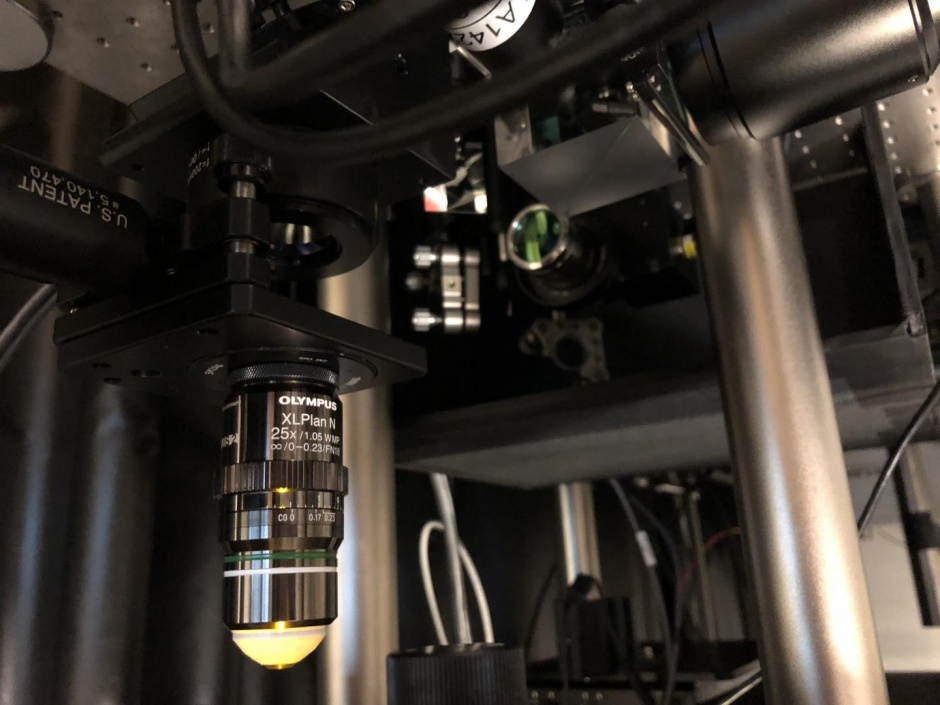Producing three-dimensional objects at very small scales with precision has often been a difficulty for engineers. Especially in the medical devices field, such objects could have great utility, but while two-dimensional patterns can be etched with precision by lasers, 3D nanostructures are more difficult; additive techniques are slow and challenging and also limited to specialised materials. Moreover, they can only make self-supporting structures – linked chains and hollow spheres are not possible.

The MIT team, led by biological engineer Edward Boyden, who is also attached to the McGovern Institute for Brain Research and the Koch Institute for Integrative Cancer Research, turned to a technique which relies on shrinking a premade scaffold structure. While shrinking has long been a staple of science fiction films from The Incredible Shrinking Man to Fantastic Voyage and more recently Ant Man, Boyden’s technique is more prosaic and grounded in reality.
In a paper in Science, Boyden, Adam marble stone and graduate students Daniel Oran and Samuel Rodriques describe technique adapted from a method Boyden’s lab developed for high-resolution imaging of brain tissue. Known as expansion microscopy, this involves embedding tissue to hydrogel and expanding it so they can be studied with a regular bench-top optical microscope.
The new method, which the team call “implosion fabrication”, reverses this technique. The researchers used highly absorbent polyacrylate, commonly used in disposable nappies, to create a larger sized scaffold of the structure they want to fabricate. This is both the solution containing molecules of fluorescein, which attached to the scaffold when activated by a specific wavelength of laser light. Using a technique called two-photon microscopy, they precisely targeted specific locations on the surface of and deep inside the gel structure and attach fluorescein molecules to these locations. These molecules have the property of acting as anchors where other molecules and groups can be bound. "You attach the anchors where you want with light, and later you can attach whatever you want to the anchors," Boyden said. "It could be a quantum dot, it could be a piece of DNA, it could be a gold nanoparticle."
Daniel Oran explains further. "It's a bit like film photography - a latent image is formed by exposing a sensitive material in a gel to light. Then, you can develop that latent image into a real image by attaching another material, silver, afterwards. In this way implosion fabrication can create all sorts of structures, including gradients, unconnected structures, and multimaterial patterns."
Once the structure has been created and the desired functional group attached, the team soak scaffold in an acid solution. This blocks negative charges in the structure of the polyacrylate gel so they no longer repel each other, and the gel contracts by a factor of 10 in each direction: a 1000-fold reduction in volume, converting the soft gel into a dense solid. "People have been trying to invent better equipment to make smaller nanomaterials for years, but we realised that if you just use existing systems and embed your materials in this gel, you can shrink them down to the nanoscale, without distorting the patterns," Rodriques said.
Currently, the technique can make objects around one cubic millimetre in volume, patterned with a resolution of 50nm. The team believes that one of the earliest practical applications might be to make specialised lenses, which could in future be used in commercial devices, and further into the future could be used to build nanoscale electronics or robots. "There are all kinds of things you can do with this," Boyden said. "Democratising nanofabrication could open up frontiers we can't yet imagine."










UK car production falls in April
Might the ´combination of factors´ include, in the face of stagnant EV sales, manufacturers reducing ICE car production in order to avoid the £15,000...